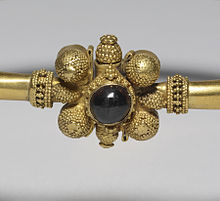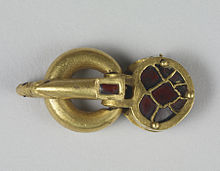Huns
![]()
This article describes, from a European perspective, the equestrian people of the Huns, who originated in Central Asia and appeared in Europe at the time of the migration of peoples. For the Chinese sources, see Xiongnu. For the tribes in Central Asia, see Iranian Huns.
Huns is a collective term for a group of Central Asian equestrian peoples with a nomadic, later semi-nomadic way of life. Their exact origin and ethnicity is unknown or disputed in modern research.
The few language remains do not allow a precise classification: Some researchers assume that the Huns spoke a Turkic language or another Altaic language. Other researchers assume a language that is now extinct or doubt the possibility of an exact classification. Likewise, it is uncertain whether the term Huns referred to a clearly defined group of tribes. In modern research it is rather often assumed that the term Huns was a prestige name widespread in the Eurasian steppe region for otherwise heterogeneously composed groups of nomadic mounted warriors. In this sense, the term Hun was used by some Eastern Roman historians as an ethnographic term for quite different equestrian peoples from the Eurasian steppe region who appeared later.
All that is certain is that the tribes referred to as "Huns" in late antique sources lived in the area between the Don and Volga rivers around the middle of the 4th century and eventually advanced westward, although they did not act under unified leadership. They invaded Europe from 375/76 with horseback fighting techniques unknown there (see Migration) and continued to play a significant role in late ancient history until the late 5th century. In the early 5th century they established a steppe empire on the Danube between Western and Eastern Rome. Under Attila their power reached its peak, although economically the Huns were always dependent on forced Roman tribute. After Attila's death in 453 and the disintegration of his empire, the Huns again largely dispersed; however, Hunnic auxiliaries in Eastern Roman service and groups designated as Hunnic in the northern Black Sea region are documented as late as the 6th century.

Hunnic garnet bracelet, 5th century.

Hunnic shoe buckle, 4th century.
Search within the encyclopedia